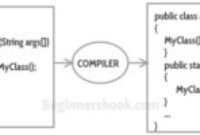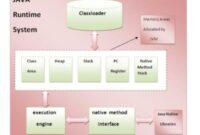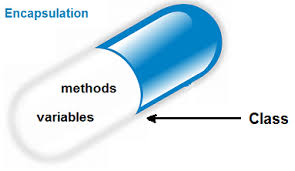Definition : Encapsulation in java is a process of wrapping code i.e data (Variables) and and processes performed on that data i.e […]
Category: Java Tutorial
this keyword in Java
this keyword The this keyword can be used to refer current class instance variable. If there is ambiguity between the […]
Aggregation and Composition (Has-a relationship)
Aggregation and Composition (Has-a relationship) Has-a relationship : Has- a relationship is also known as composition and aggregation. The main […]
super keyword in java
Super keyword : The super keyword in java is used in three ways :- super can be used to refer […]
final keyword in java
final keyword final keyword is used for restrictions. It is used with variable to restrict its re assignment, it is […]
Static variable, method and block in Java
Static variable, method and block Static variable : Static variable’s value is same for all the […]
Constructor in Java
Definition : A Constructor is used to initialize a newly created object and is called just after the memory is […]
Method Overloading in Java
Method overloading If two or more method in a class have same name but different parameters, it is known as […]
Class and Objects in Java
Class and Objects Class : A class can be defined as a blueprint or a set of instruction to build […]
Unicode Systems in Java
Unicode System Unicode is a standard of defining the relevant code by using character encoding. Character encoding is the […]
Advantages of oops (oops concepts)
Advantages of oops Code re-usability : with the help of inheritance we can achieve re-usability and also […]
Naming Conventions in Java
Java Naming Convention : A naming convention is a set of rules for choosing the character sequence to be used […]
Variables in Java
Variables in java : Division one based on types of value represented by a variable,variables are divided into two types: Primitive variable:- can be used to represent primitive values. Ex:-int x=10; Reference Variables:- Can be used refer objects. Ex:- student s=new student(); Division two Based on position of declaration and behavior all variables are divided into three types:- Instance variables Static variables Local variables Instance variables If the value of a variable is varied from object to object such type of variables are called instance variables. […]
Internal architecture of JVM
Internal architecture of JVM Classloader: Classloader is a subsystem of JVM that is used to load class files. Class or Method Area : Class or Method Area stores per class structures such as the runtime constant pool, field and method data, the code for methods. Heap: It is the runtime data area in which objects are allocated. Stack: Java Stack stores frames.It holds local variables and partial results, and plays part in method invocation and […]
Difference between JDK, JRE and JVM
Difference between JDK, JRE and JVM JDK The Java Development Kit (JDK) is a software development environment used for developing Java applications and applets. It includes the Java Runtime Environment (JRE), an interpreter/loader (java), a compiler (javac), an archiver (jar), a documentation generator (javadoc) and other tools needed in Java development. JRE The Java Runtime Environment (JRE) is a set of software tools for development of Java applications. It combines the Java Virtual Machine (JVM), platform core classes and supporting libraries. JRE is part of the Java Development Kit (JDK), but can be downloaded separately. JVM A Java virtual machine (JVM) is an abstract computing machine that enables a computer to run a Java program. There are three notions of the JVM: specification, implementation, and instance. An instance of a JVM is an implementation running in a process that executes a computer program compiled into Java.
real life applications of java
There are many places where java applications are used in real world, starting from commercial e-commerce website to android apps, […]
JAVA BASICS introduction to java | Being Study
What is java ? Java is a high level object oriented programming language and plateform similar to c++, developed by Sun Microsystems in 1991, but it is simpler to use than c++ and is simplified to eliminate language features that cause common programming errors. Java is a high level, robust, secured and object-oriented programming language.
Hibernate Framework,This a way of easy to learn
Hibernate ORM (Hibernate in short) is an object-relational mapping tool for the Java programming language.It provides a framework for mapping […]
What is Java technology and why do I need it?
What is Java technology and why do I need it?Java is a programming language and computing platform first released by […]
Encapsulation in Java
Definition : Encapsulation in java is a means of wrapping code i.e knowledge (Variables) and and processes carried out on that knowledge […]






